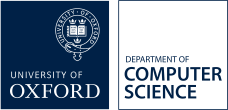A different use of biased MD to study biomolecular recognition and binding
- 14:00 28th February 2025 ( week 6, Hilary Term 2025 )(this is a virtual seminar)
Classical molecular dynamics (MD) is a powerful tool to describe biomolecular processes at the atomistic/molecular level. However, many phenomena occur on a timescale which is far from reach of present MD simulations. Indeed, MD simulations of complex biomolecular systems can rarely be considered ergodic and capable of providing sufficient statistics for estimating free energies, for instance.
In this context, enhanced sampling methods (ESM) exploit statistical mechanics principles to infer thermodynamic quantities of interest from MD simulations of limited extent. In one class of ESM, the MD is biased by suitable external forces, acting on so-called collective variables (CV), which force the sampling of some conformational space regions and then provide recipes to recover unbiased statistics.
Here, I will describe some limitations of this kind of approaches for practical applications, due to the fact that the knowledge of the suitable CVs to be biased is often lacking. I will show some examples where biasing CVs based on electrostatics and effective hydrophobicity can provide very useful insights, albeit different from free energies, also in cases where the reaction coordinate of the process of interest can not be approximated with the necessary detail due to lack of knowledge.
This approach is here applied to the description of the binding process of Src kinase, a well-known target for several diseases, especially cancer, and PP1, one of its inhibitors.
